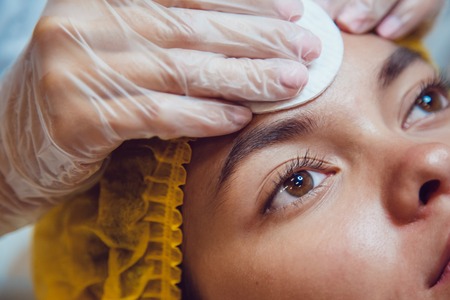1. Understanding Pigmentation: A Brief Overview
When it comes to our skin, pigmentation is a word that often pops up in conversations about beauty, health, and self-confidence. At its core, pigmentation refers to the colouring of our skin, which is determined by the amount and type of melanin produced by specialised cells known as melanocytes. This natural process is influenced not just by genetics, but also by an array of lifestyle choices and environmental factors—elements that are particularly relevant here in the UK.
Across Britain, some of the most common pigmentation concerns include hyperpigmentation (such as sun spots and melasma), hypopigmentation (where patches of skin lose colour), and conditions like vitiligo. The typically changeable British weather, with its mix of overcast days and bursts of sunshine, can play a significant role in how these conditions develop or worsen. Additionally, our everyday habits—from time spent outdoors to dietary choices—can either exacerbate or help prevent pigment-related issues.
Understanding the basics of skin pigmentation isn’t just about aesthetics; it’s vital for overall health and self-assurance. Recognising early signs of abnormal pigmentation can sometimes point towards underlying health concerns, while embracing knowledge about your own skin helps foster a more confident relationship with yourself. In the following sections, we’ll delve into how lifestyle and the UK environment intertwine to influence pigmentation, offering insights from both scientific perspectives and personal experience.
2. The British Climate: How Weather and Seasons Affect Skin Tone
If you have ever lived in the UK, you will know that its moody skies, frequent drizzle, and long winter months create a unique atmosphere that’s both beautiful and challenging for our skin. Unlike sunnier climates, Britain’s weather is characterised by unpredictable showers, persistent cloud cover, and only fleeting moments of sunshine – all of which play a significant role in influencing pigmentation conditions.
One of the most noticeable impacts of the British climate is on vitamin D levels. The lack of consistent sunlight means our bodies often struggle to produce enough vitamin D, a nutrient essential not just for bone health but also for healthy skin function. With limited UV exposure, melanin production is reduced, which can result in paler complexions during much of the year and may exacerbate certain pigmentation conditions like vitiligo or hypopigmentation.
To better understand these seasonal effects, consider the following:
| Season | Sunlight Hours | Potential Impact on Pigmentation |
|---|---|---|
| Winter | Low (average 1-3 hours/day) | Paler skin tone; increased risk of vitamin D deficiency; possible flare-ups of existing pigmentation issues |
| Spring/Autumn | Moderate (average 4-6 hours/day) | Slight increase in melanin production; mild improvement in skin tone uniformity |
| Summer | Higher (up to 7-8 hours/day) | Boosted vitamin D synthesis; potential for sun-induced hyperpigmentation if sun protection isn’t used |
The tendency to stay indoors during colder months further limits our sun exposure, which contrasts sharply with habits in Mediterranean or tropical regions. When summer finally arrives, there’s often a rush to bask in the rare sunshine, sometimes without adequate SPF protection – ironically leading to sudden spikes in sun-induced hyperpigmentation such as melasma or age spots.
This cyclical dance between cloudy days and short bursts of sunlight uniquely shapes how pigmentation presents itself across Britain. Understanding this relationship helps us tailor skincare routines and lifestyle choices that work harmoniously with the environment we call home.

3. Diet and Lifestyle Habits in the UK
When considering pigmentation conditions within the UK, it’s impossible to overlook the profound influence of diet and daily habits on skin health. The classic British diet—characterised by hearty portions of meat, potatoes, bread, and dairy—offers both benefits and drawbacks for skin pigmentation. On one hand, traditional staples like oily fish and eggs provide essential nutrients such as vitamin D and omega-3 fatty acids that support overall skin vitality. However, high consumption of processed foods and refined sugars may exacerbate inflammation, potentially worsening hyperpigmentation or triggering new blemishes.
Tea Culture: A Quintessential British Ritual
One cannot discuss British lifestyle without honouring the nation’s beloved tea culture. Sipping a cuppa is more than just a habit; it’s woven into the fabric of daily life across the UK. Fortunately, tea—particularly green and black varieties—is rich in antioxidants known as polyphenols. These compounds help combat oxidative stress, a key factor in premature ageing and uneven pigmentation. While this offers some protection against environmental damage, adding excessive sugar or full-fat milk to your brew can offset these benefits by increasing inflammatory responses in the body.
The Social Side of Alcohol Consumption
Britain’s social scene frequently revolves around the pub, with alcohol consumption playing a central role in many gatherings. While moderate drinking is often considered part of a balanced lifestyle, regular or heavy alcohol intake can dehydrate the skin and impair liver function—both of which are detrimental to maintaining an even skin tone. Alcohol also dilates blood vessels and may aggravate conditions like melasma or rosacea, causing redness and patchiness that contribute to perceived pigmentation issues.
Finding Balance for Better Skin Health
Ultimately, embracing a balanced approach to food and drink is essential for those concerned with pigmentation. Incorporating fresh fruits, vegetables, whole grains, and healthy fats can promote resilience against oxidative damage. Meanwhile, being mindful of portion sizes, sugar intake, and frequency of alcohol consumption can have a visible impact on skin clarity. As someone who has experimented with these dietary tweaks myself, I’ve found that small changes—like swapping out an extra pint for herbal tea or adding more colourful produce to my plate—not only boost overall wellbeing but also help foster a naturally radiant complexion.
4. Urban Living and Pollution
Living in the heart of bustling UK cities offers a vibrant lifestyle, but it also comes with unique challenges for skin health, especially when it comes to pigmentation conditions. City dwellers often find themselves exposed to higher levels of air pollution, which includes particulate matter, nitrogen dioxide, and other harmful toxins. These environmental aggressors can have a direct impact on skin by weakening its natural barrier and triggering inflammatory responses. Over time, this oxidative stress accelerates the production of melanin, resulting in an uneven skin tone or worsening of existing pigmentation issues.
The Urban Skin Experience
From my own experience navigating daily commutes through London’s tube stations and busy high streets, I have noticed how my complexion tends to look duller and more prone to dark spots after periods of increased pollution exposure. It’s a common conversation among friends living in metropolitan areas—how our skin seems to collect city life in the form of stubborn pigmentation marks.
Impact of Pollution on Pigmentation
| Pollution Source | Typical Exposure in UK Cities | Effect on Pigmentation |
|---|---|---|
| Vehicle Emissions | High during rush hour; central urban zones | Increases free radicals; triggers melanin overproduction |
| Industrial Pollutants | Near factories or industrial estates | Causes inflammation; worsens hyperpigmentation |
| Cigarette Smoke (Passive) | Pubs, outdoor seating areas | Weakens skin barrier; contributes to patchy discolouration |
The Role of Stress in Urban Environments
Beyond physical pollutants, modern city life brings about heightened stress levels—a factor often underestimated in its effect on skin. Chronic stress increases the release of cortisol, a hormone that can disrupt normal skin function and encourage uneven pigment formation. The fast-paced urban lifestyle, late nights out, and pressure from work commitments all play their part in making pigmentation concerns more prominent among city dwellers across the UK.
In conclusion, while urban living brings energy and opportunity, it’s important to recognise how both pollution and stress can silently influence the development or aggravation of pigmentation conditions. Adopting protective skincare habits and stress management routines becomes essential for anyone aiming to maintain an even complexion amidst the city’s lively chaos.
5. Cultural Attitudes and Skin Care Customs
When reflecting on pigmentation conditions in the UK, it’s impossible to ignore the cultural attitudes that shape our daily habits and perceptions of beauty. Historically, British society has experienced a fascinating shift when it comes to tanning. There was once a time when porcelain skin was the height of sophistication, but over recent decades, a sun-kissed glow has become highly desirable—despite the famously unpredictable British weather. This aspiration for bronzed skin leads many to seek out sunbeds, self-tanning products, or take holidays abroad specifically to achieve that golden look. Unfortunately, these pursuits can sometimes exacerbate pigmentation issues like sun spots or uneven skin tone, especially if proper protection isn’t prioritised.
Within the realm of skincare routines, there’s a delightful blend of traditional British pragmatism and the growing influence of global beauty trends. Many people still swear by simple routines—think a classic cleanse and moisturise approach with trusty pharmacy brands like Boots or Simple. At the same time, there’s increasing curiosity about targeted treatments for pigmentation, such as serums rich in vitamin C or niacinamide. It’s common to find Brits discussing their go-to products over a cup of tea, sharing both age-old wisdom passed down from relatives (like using cucumber slices or rosewater) and new discoveries influenced by K-beauty or French pharmacy staples.
Pharmacies play a uniquely comforting role in the UK’s skincare culture. The accessibility of over-the-counter remedies means many will try topical solutions before consulting specialists. Products promising to fade dark spots or brighten dull complexions line the shelves, with labels that are reassuringly familiar. Yet, there remains a reserved scepticism; Brits are known for their cautious optimism—willing to try new things but rarely swayed by extravagant claims.
At-home remedies also hold a certain nostalgic charm here. Some still dab lemon juice on freckles or make masks from oats and honey, echoing a connection to nature and tradition. However, greater awareness around skin health—especially regarding sun safety—has led to more informed choices. Wearing SPF daily is becoming less of an afterthought and more of an essential step in any routine, aided by public health campaigns and easy access to quality sunscreens.
Ultimately, British attitudes towards tanning and skincare reflect a delicate balance between embracing the best of modern science and honouring beloved customs. This interplay significantly shapes how pigmentation conditions emerge and are managed throughout the country—a blend of heritage, innovation, and ever-evolving self-care rituals.
6. The Role of the NHS and Access to Care
When it comes to managing pigmentation conditions in the UK, the National Health Service (NHS) plays a pivotal role. Living here, I’ve come to appreciate not only the accessibility of care but also the uniquely British approach to public health advice. For those experiencing changes in skin pigmentation—whether due to environmental factors like limited sunlight or lifestyle habits such as diet—the NHS is often the first port of call.
Accessing Dermatological Care
Most Britons begin their journey with a GP, who can assess the condition and refer patients to a dermatologist if necessary. While waiting times for specialist appointments can sometimes be lengthy, especially for non-urgent cases, there is a growing recognition of the psychological impact that skin concerns can have. Many local surgeries now offer advice on over-the-counter solutions and self-care while you wait for further assessment—a very pragmatic, British solution.
Public Health Advice and Education
The NHS offers accessible online resources about skin health, tailored to common UK concerns such as sun safety in our unpredictable climate or the effects of air pollution in urban areas. There’s also a strong emphasis on prevention and early intervention; campaigns raise awareness about how simple steps—like using sunscreen on rare sunny days or adopting healthier eating habits—can influence your skin’s appearance. This community-minded approach feels distinctively British, encouraging people to look after themselves and each other.
Support Networks and Ongoing Management
For those needing ongoing support, there are NHS-backed patient groups and charities dedicated to skin health. These provide both practical information and emotional reassurance—a lifeline when dealing with persistent pigmentation issues. It’s heartening to see how much value is placed on mental wellbeing alongside physical health. In my experience, knowing you’re not alone in your journey makes all the difference.
Ultimately, while access to dermatological care through the NHS can require patience, the blend of professional advice, public education, and supportive networks reflects a holistic approach. For anyone navigating pigmentation conditions in the UK, these resources help foster resilience and empower individuals to make informed lifestyle choices for healthier skin.


